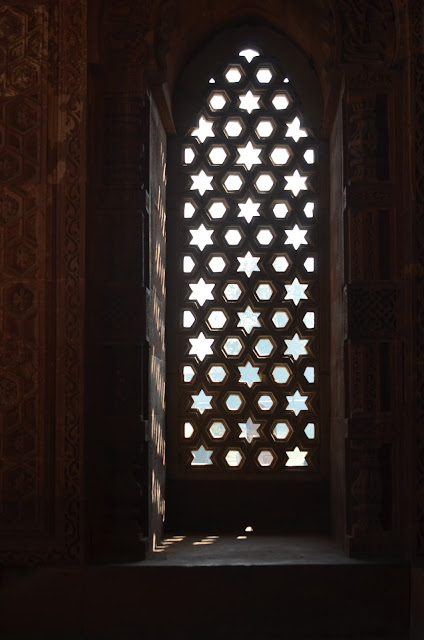Closer to the Edge
Tuesday, February 12, 2013
Monday, February 11, 2013
This is India
This
is India
Everything turns
black. The walls of the ashram are no
longer a vibrant yellow, but now a hazy black.
In creeps the chill air of a cool Indian night along with the sounds of
insects buzzing, mischievous monkeys playing, and even a sullen moo from a
sacred cow breeches this crisp night.
The gecko scurries from a once hot light bulb to the warm comforts of
the curtains, the movement of which sends a chill down my spine—I did not want
this creature to continue its search for comfort…saying as though the curtains
dangled ever so closely above my bed. I
pulled the quilt closer to my face, the aroma of which was not all too
pleasant, but the warmth was what my body required. “So this is India…”, I
thought to myself as I gazed into the blackness of a room without power. Suddenly the brightness of light filled the
room, prismatic yellows reflecting into my retinas. A buzzing noise surfaced from somewhere on
the floor as the heater purred itself to life—heat once again moving slowly
across the tiled floor. The heat, now
filling the entire room, softly caresses my skin, and begins to seduce my body
into slumber. My final thoughts linger
on my tongue—India…what is India? But
the heat kisses my lips and whisps me into strange dreams…
The
streets of India are crowded with the wild rage of vehicles simply making their way to work, but within the streets—within the rickshaw, whose interior design
cost 10,000 rupees (a good price but still good quality), lies the chaos of
India. “This is India.” Rajak the
rickshaw driver says in English as he maneuvers his way in and out of
traffic. We drive, it seems, without
care, passing trucks whose exterior is decorated with English cautions of “use
horn” and English branded advertisements for Pepsi. All of which are in strong contrast to the
sign that ornaments the light post reading once again in English, “Do not honk
if you love peace.” Horns blast through
the air, diminishing anyone’s desire for peace—to the Indians, peace seems to
be only a mere suggestion. “This is India.” Rajak the rickshaw driver
repeats. His English, he says, he
learned from the streets—from people like us he says. Somewhat broken, his English words roll off
the roof of his mouth in a semi-understandable manner, but it is through these
words he is able to communicate with me stories of Indian traditions—all
embedded with personal accounts of love and tragedy of an arranged marriage his
family and culture required. The
rickshaw temporarily stalls at a street corner—Rajak apologizes saying “sorry
sorry”. But as we wait for the engine to
start an influx of people gather around the rickshaw—they gather around the
color of my skin. “Madame…Madame.” They
plead, motioning with their hands want of money or food. Their clothes are tattered and hair is
snarled with dirt. The naked bottom of a
baby is visible as the mother clutches tightly around the child’s waist again
motioning with her free hand—touching my white skin—for money--for food she
says in English then continues speaking in a foreign tongue. The engine jolts to life, sending us on our
way—the words money, money slowly fading away.
“This is India.” Rajak states.
I
awake, somewhat disturbed from my dreams, but still questioning “what is India?” Later that day, my life is filled with the
smiles of Indian children. I am pulled
in every direction by small hands eager to play or pose for a photo. “Madameji…play…photo.” They repeat over and
over again. Their diction is mainly Hindi,
but they are learning English through a Hindi medium school. Every once in a while I hear, “hello, my name
is…” and “how are you?” or my favorite, “I like your cheeks.”—the children
smile pointing at their cheeks. The
children fill my life with happiness and accept me as part of their
family. To them I am not an outsider—I
am a sister—I am a best friend. I then
realize, through their broken English words what India is. To me, India is an explosion of culture,
life, and progression. India is a
society where new ideologies are being adapted—new ideologies like the English
language is used to educate, to produce, to gain profit, to climb the social
ladder. English in India is a new form
of English. It is not American-English
nor British-English, it is India’s English—a mixture of English, Hindi and
other local dialects. Indian English is
a way to communicate culture, both modern and traditional, but most importantly
Indian English is a way in which you are accepted into a society—or more so into
a family. To truly know what India is,
you must be a part of India. You do so
by becoming part of a family, and for India, they welcome you with open and
hospitable hands to learn, but more importantly to love. To me, “this is India.”
Subscribe to:
Comments (Atom)












